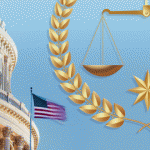From Flexner’s point of view, this made perfect sense. At the time, the majority of medical schools were private institutions that were mainly interested in earning money. They were not a neutral or reliable arbiter of medical proficiency. Given that physician qualifications were a matter of public interest, the state seemed to be the natural guardian against quacks and charlatans.15
Although some states had introduced physician licensure previously, the Flexner Report made state licensure standard. Thus, in addition to reforms in medical education, the Flexner Report fueled the widespread adoption of a disjointed system in which each state sets its own standards for granting physicians a license to practice medicine.
Medical license reciprocity is the practice of granting physicians in one state the right to practice medicine in another state. You’ve never heard of this courtesy because, by and large, it doesn’t exist—except in Michigan. The Michigan Board of Medicine will grant the right to practice to any physician who has had an active license for at least a decade anywhere in the U.S. or Canada.16 Before the pandemic, no other state routinely granted this courtesy.
The New Mexico Medical Board allows licensure by endorsement, in which board-certified physicians who have been licensed and in practice in another state for at least three years can apply for a medical license without resubmitting proof of education or training.17 Endorsement is not the same as reciprocity; it’s just a shortcut. The candidate still needs to pay the licensure fee.
Now we come to the real reason that states have clung to this antiquated system of medical licensure. When you wonder why there is no national license to practice medicine, an obvious answer is profit.
The average cost of initial medical licensure for an MD in the U.S. (including a background check, where required) is $458. In five states, the cost of initial medical licensure is over $1,000; in 28 states, it is at least $500.18 Nationwide, just granting medical licenses to physicians generates well over $200 million in total state revenue annually.
There is also a less obvious answer: competition. Controlling who can practice medicine allows the state to control competition. Physicians who live in a given state can be protected from having to compete with physicians from neighboring states. Because it is difficult for physicians to practice across state lines, a physician who earns money in a given state is more likely to spend (and pay taxes) on that money in that same state. State legislators have no particular incentive to increase competition for the physicians who voted them into office.



